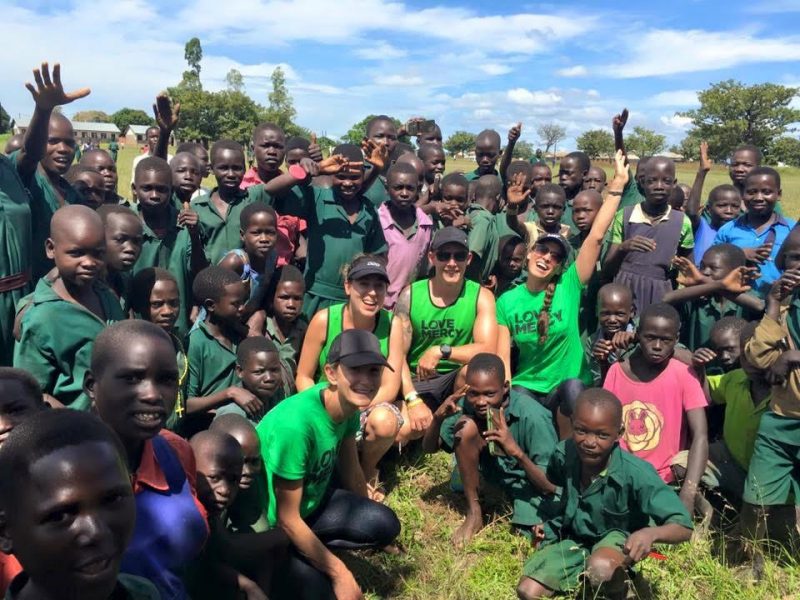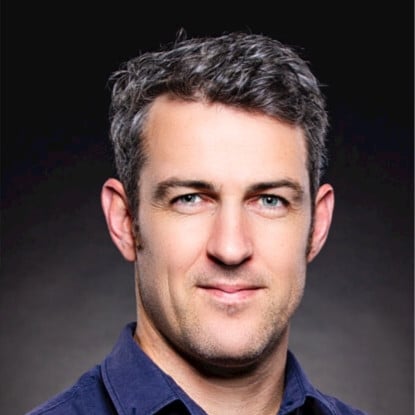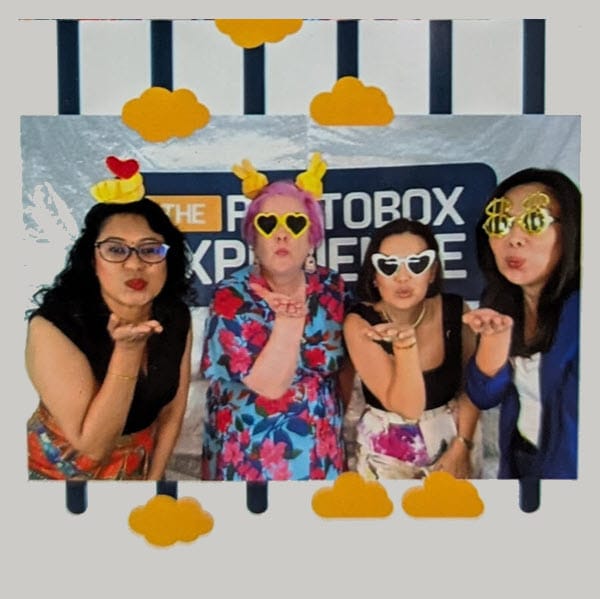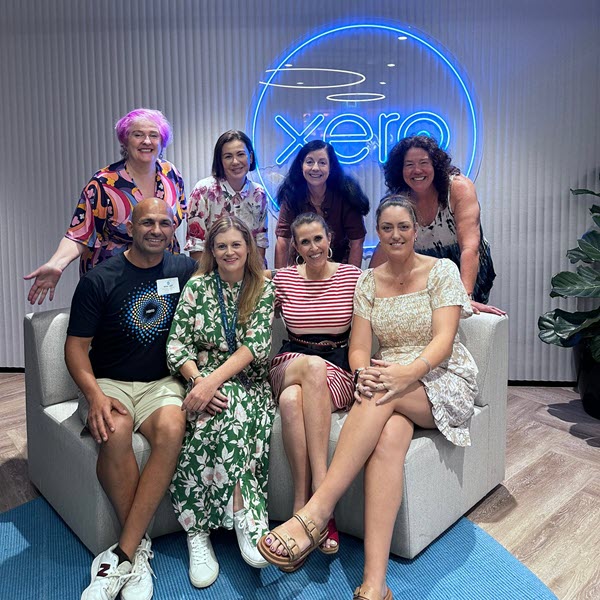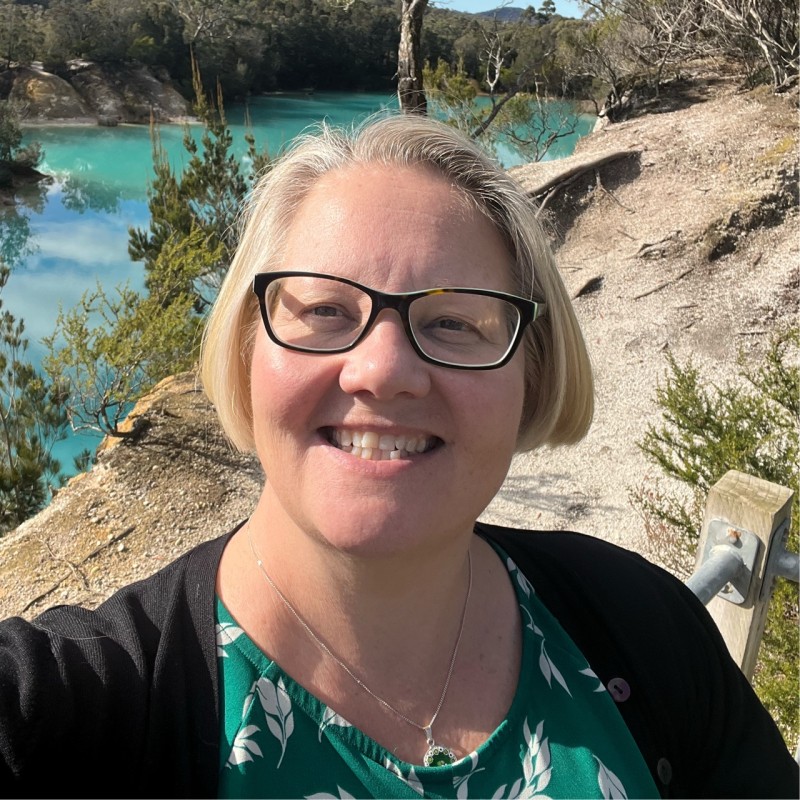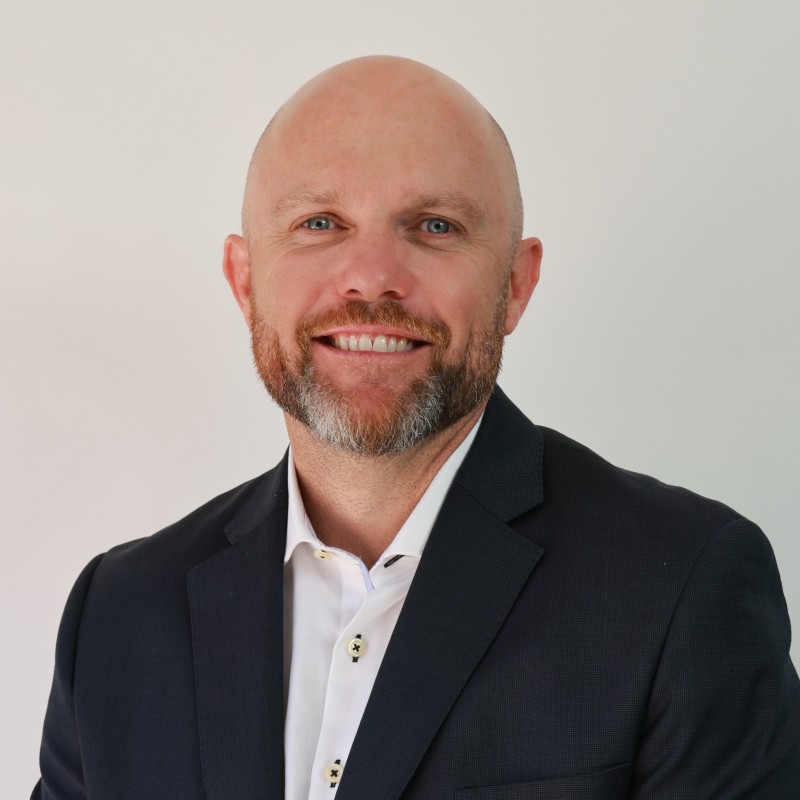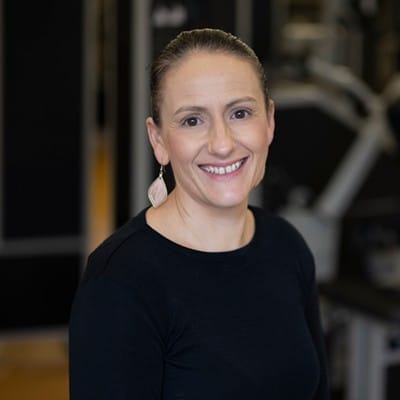When a client comes in. We’ll say, look what apps are you using? What’s the workflow? What’s happening there? Can we automate? And we either try and do it ourselves, I’m encouraging the team to research and be able to help. Or, if it’s too much, let’s say for example, we’ve got someone who’s using a simPRO now that program’s very involved, so we refer them to a specialist.
Today I’m speaking with Natalie Lennon from Two Sides Accounting
In this episode, we talk about . . .
- How she started a 100% cloud-based practice
- What Accounting Apps she uses to Automate her practice
- How she offers Apps Advisory to her clients
- How she is using Zapier to connect a number of solutions and
- Natalie’s commitment to helping the Love Mercy Foundation and the cents for seeds program for each new client onboarded.
Heather: Hello Natalie, thank you so much for joining us here on Cloud Stories today. I’d like to start with the icebreaker question.
Who was your favourite band or music inspiration from your teenage years and why?
Natalie: Okay, I was a teenager growing up in the 90s, this is probably going to be a bit embarrassing. But the Vengaboys, yeah, you could dance to it and it was always playing when you went to a party and you just get your groove on.
Heather: Wow. I wasn’t expecting that. How many songs did they have?
Natalie: They had quite a few surprisingly.
Heather: Okay. I had no idea they had a few songs. That’s gives me some homework to do, after the podcast show. Thank you very much for sharing that, Natalie. Can you share with our listeners a bit about your background?
Natalie: Sure. I started my career quite early. I didn’t really know what I wanted to do when I left school, I went off and got a job in the city doing admin, doing reception work. And then the financial controller got me doing some bookkeeping and I really liked it. Went off and did TAFE and then obviously liked it a little bit more and decided, okay, now I really know I want to do accounting. I went off and did uni, while I was still working. Then I left the admin, bookkeeping and got a job in an accounting firm. And I think that was where I really knew, okay, this is what I want to do, dealing with clients and just making a difference.
Natalie: And then sort of time got away and I wanted to venture into the commercial space. Off I went back into the city at this stage. And worked my way up in commercial, but then was really missing that client contact, again. Then I left there and went back into public practice, where I was in a firm for about six months. And then I became a partner, at quite young age of 28. And I always think everything happens for a reason, but I did probably rush into that a little bit quickly. Being 28, being a partner, it all seems pretty exciting. And I didn’t really know the client and mix, the team, that well.
Natalie: But, what I did learn was how to actually run a practice, because no one teaches you that at uni. The founding partner was quite a huge part of mentoring me. And then six years after that, the founding partner left. And then I sort of decided there’s all these fun things we can do with technology. And I buying into a firm that was 30 years old, was a bit hard to get some of those radical ideas across. I decided it was time to go out on my own and Two Sides accounting was born.
Heather: Excellent. Yeah, joining a partnership at 28 is very young and such a big move to have. And it is interesting how you say they don’t teach us actually how to run a business at university. And I think many people uncover that, which is, we’re taught to do the technical skills but not the actual running of it. And you remind me of how the benefits of actually being in small business and being a small business practitioner, is that total contact with the small business owners who you love and you feel a partner and part of their business. And that’s really such an exciting part of being an accountant.
Natalie: Yeah, 100%.
Heather: 100% is the keyword today.
You started 100% cloud-based firm. How did you do this? How difficult was it?
Natalie: Look, it probably was a lot harder than I thought. I just thought I was going to start afresh and start from scratch and I could do all these things, but it takes time. You’ve got to work out what procedures you’re going to use, what systems, and then getting the clients on board. Some of the clients that came across from the old firm, when we tried to get them to use DocuSign, at first they were like, oh, what is this, I can’t use it. And then after that, once they got into the rhythm of it, they were like, this thing’s amazing. I can sign a tax return and have it lodged within 10 minutes. Whereas before, they had to print it, sign it, scan it, email it back. I think just once you get the buy-in from the clients, it’s a lot easier.
Heather: Yeah, absolutely. It’s funny because digital signing technology, such as DocuSign, is typically the first thing I say a practice should implement, if they’ve got nothing else in. Because, it’s so simple, it’s so easy and it saves so much time and money in terms of admin and postage. I just sent someone an email saying, I can workout how to save you $5000, just click this button here.
Natalie: It’s amazing. Yeah.
Heather: How long ago did you start your practice?
Natalie: About two and a half years.
Heather: Or what year did you start your practice?
Natalie: 2017, it’ll be coming up to our third year in July.
Heather: Wow.
Natalie: It’s flying by.
What would you do differently if you could do it over again?
Natalie: That’s a tough one. I think I’d probably hire quicker. I think the biggest problem that I had, and I guess it’s hard in any small business or firm, is knowing when’s the right time to hire someone. You wait too late and it’s just crazy and you train them and you’re running behind. Too early, and you’re going to have cashflow issues. Just finding that sweet spot, not being afraid.
Heather: Yeah, no it is, especially when you’re small. Taking on a whole full time worker is such a massive impact, both to your capacity, because otherwise they’re sitting there and doing nothing. Or, sitting there and you’re taking away from your time to actually train them up. Where did you turn to for resources or support to start your business?
Natalie: I think when I first started, I have a lot of friends who are accountants as well. Just being able to lean on them with ideas and just when you’re doubting yourself, to say to them, what do you think? And they just like, keep going, you’re doing the right thing. And then in terms of some of the tech and the automation, I think listening to Practice Ignition webinars, listening to Karbon webinars. Listening to Xero webinars, going to Xerocon. Going to all those events and also being active in some of the Facebook groups. Some of those things that we hear in those groups are just things you wouldn’t even have thought of. Especially, because we do a bit of bookkeeping. Being able to see the bookkeeping from a bookkeeper’s point of view and going, oh yes we should be doing that. But accountants just don’t think like that. I think just the learning curve has been huge.
Heather: Yeah, absolutely. And it is interesting where we are funding all of our resources and support for. Thank you for sharing that.
Can you describe to our listeners how your practice is structured and just, I don’t want you to give away anything private, but generally just an overview of how it’s structured? And what sort of services you offer? And if you have specialised or chosen a specialty to follow.
Natalie: Sure. When you say structure, are you meaning people or are you meaning
Heather: Are you running it as a business, are you running it as a partnership? That’s sort of-
Natalie: Yeah. Okay. I set it up as a trust and then I’ve got a team of six. I’ve got a practice manager, I’ve got a bookkeeper, a couple of accountants, a junior admin, and we’ve got one offshore team member. That obviously has its challenges as well. We do fixed-fee pricing, with the exception of our bookkeeping, which we still do based on an hourly rate. We’ve got some monthly packages that we have on our website. It’s very transparent for the clients to see what we offer. And we just found that by having fixed-fee when a new client walks in, you can confidently say to them look, these are the services we think you need, this is the price. And you’re just starting off that conversation. Whereas I think when you bill by the hour, and is the age old sort of argument, is you say, well I don’t know how much that’s going to cost. It could be $1000, could be $10 000. Now I don’t know about you, but if a service provider said that to me, I’d be running the other way.
Heather: Yeah, absolutely. Yeah. It gets you further along in the conversation about whether they’re prepared to take that sort of pricing, and whether they can wear that and what they want in the business. And look, thank you for sharing that. Because I think the person out there listening, is perhaps you five years ago. And understanding that structure can help them pull up for their own vision board, what they should be working towards. And I presume from the way you described, that you’re mainly offering tax services.
Natalie: Yeah. We offer everything from bookkeeping through to compliance, through to advisory type-work. But we just find that, by offering the bookkeeping, that’s where a lot of our leads come from. Clients looking for someone to do the bookkeeping and then we tell them we do it all. And they just move everything across. And I guess you might say bookkeeping is a bit of a loss leader for us, we don’t really make a lot of money on that. But we know that if we do that well and we get that right, not only is the relationship good because we’re seeing the day to day what’s going on for the clients, but the end of year work is a lot smoother. We’re not having to say, you bought this car six months ago, we need the paperwork, because that’s already in the file.
Natalie: And then we do quarterly check-ins. So we do either Zoom or face to face. And some of our clients just have an email check-in, where we just actually push out their reports and just give them a few KPIs. For example, if their wages have doubled last month, hey wages have double last month, something going on here. Just to try and keep that relationship and let them know that we are there. We are looking at their numbers in the background and that you know we actually care.
Heather: And it’s through doing the bookkeeping and the cloud accounting and the technology, that enables you to be able to get that timely contact with confidence.
Natalie: Yeah.
Heather: Would you like to share with us what solutions you’re using to do the analysis of reporting and advisory there?
Natalie: Yeah, for the most basic ones we’re just using Xero. But some of our other ones we’re using Futrli. We’ve branded that as our Two Sides live dashboard. The clients that aren’t really good with numbers and they don’t really want to get into Xero and run reports, they love that because we can look at it. We look at a pie graph, for example, and say, back to the wages again, your wages are 40% of your expenses. And just being able to look at that and then also doing budgets and cash flows. With all of our new clients that’s the first thing we do, because I think that’s the number one issue that small businesses have, is cashflow. And nine out of 10 do not have any sort of cashflow forecast whatsoever.
Heather: Excellent. Thank you very much for sharing that with us.
Have you chosen or altered or naturally evolved into specialising in a particular industry or category?
Natalie: When we first started, we were specialising in startups. In the beginning I had a lot of friends who were in the startup space and I was always giving them a lot of free advice and I loved it. I love making a difference and I thought, well this is really good because in the beginning they’re not going to have a lot of money. And a lot of people say to me, you’re stupid, why are they your target? But some of them have actually grown and now they remember that we were there in the beginning, when they had no money and no one cared. And now we’ve got that really good relationship and we’re on the journey with them. Now our target has changed a little bit, because we’re at a bit of capacity with our startups. Now we’re looking for more established businesses, who probably have an older accountant, helping them with the advisory and that sort of thing. And helping them automate and have all their systems talking together and all those types of things.
Heather: That’s interesting. Thank you for sharing that.
What does a typical day look like for you, Natalie?
Natalie: Crazy. It’s funny. We have this little joke. My practice manager and I, we come in and we go, right, today is going to be a great day and it’s going to be easy and it’s going to flow. And then there’s always something going on. There will be, client that calls up in a huff, because they want something yesterday. They’re buying a car, they urgently need this and we have to drop everything and do all that. But, the average day would probably be meeting with a client or two in the office. Then reviewing work with the team. We do a daily huddle every morning. What’s everybody doing for the day? What are they getting out? Roadblocks, et cetera. Yeah, no two days are the same.
Heather: Yeah, it’s funny, isn’t it? All these processes and checklists and then it does become like that.
You clearly love your technology, you use a lot of accounting apps in your business. Can we explore which ones you’re using and how you’re actually going about choosing them? Can I ask you, what are you using to automate your accounting practice?
Natalie: We use Karbon. We use Karbon for all of our practice management. What Karbon does for those people listening who don’t know about Karbon, basically you don’t use Outlook. You only use Outlook for your calendar. Karbon pulls in all the emails and it comes into what’s called a triage. You’ll have your emails, pieces of work that have been assigned, your jobs, they called another systems and it’s very interactive. If I go into a client, I can see that email trail, not just each email have to click into, but the actual trail. Let’s say for example, I know one of the juniors had to email someone this afternoon, I can just go in and check, did they do it? If I really want to. It’s quite good for the offshore team as well, because everyone’s got visibility.
Natalie: It’s got Kanban boards. It’s similar to Trello, for those of you have used Trello, it’s pretty visual. It’s got checklists. Every piece of work we do, BAS, monthly bookkeeping, they all have a checklist so that every single time we do that job, we’re following the checklist. I think that’s very important because even though we do it all the time, we think we know the steps, you can miss something. That’s been huge for us. And I think the other part is Xero Tax. We use that for all that tax returns and BAS’, so that they’re all sent out for signing by Xero Tax or DocuSign. And then we use Dropbox so they automatically save into the Dropbox once they’ve been signed. That takes that part of the process away. Yeah.
Heather: Excellent. And for onboarding clients?
Natalie: For onboarding, we use a combination of JotForm. We capture all their information on JotForm and then that pushes through to MailChimp. They get a welcome email, pushes through to Practice Ignition. We use Practice Ignition now for every single engagement. Nothing goes out without Practice Ignition. You send out the engagement, they sign it, they put in their payment details, takes the money, sends the invoice, puts it into Xero, reconciles it, done. It’s a lot.
Heather: You collect the information using JotForm?
Natalie: Yes. Yeah.
Heather: And is that connected to MailChimp and Practice Ignition via Zapier?
Natalie: Yes.
Heather: Oh, okay. You actually have on your website, people can go and have a look at platforms you love to partner with.
Natalie: Yes.
Heather: I printed that off, I’m ticking it, I’m playing App bingo here as your talking. But JotForm was one of the ones I didn’t know but I presumed it was kind of digital collection form.
Natalie: It’s like TypeForm.
Heather: Yeah. That’s great. I’m always excited to hear about something I don’t know. And for your self managed super funds and your asset compliance, what are you using in that regard?
Natalie: We use BGL, CAS 360 and Super Fund 360.
Heather: Okay. Thank you very much for sharing some of those tools with us. Now also, you do a lot in terms of marketing. What business tools are you using to assist you in marketing?
Natalie: What sort of business tools do you mean?
Heather: Well, I’ll call out the ones on the Bingo card.
Natalie: Oh, okay.
Heather: I just thought-
Natalie: I’m probably just not up on the lingo of what’s classified as marketing.
Heather: Oh, okay. I really just wanted to share it so people can hear what you’re using. You’re clearly, well, it looks like you’re using Canva to design a lot of your graphics.
Natalie: We did use Canva, but now we’ve actually outsourced our social media. We’ve got some people doing that.
Heather: I was thinking it was looking very impressive. Canva isn’t impressive, but I was like-
Natalie: Yeah.
Heather: You’re doing some really nice-
Natalie: We still use Canva, from time to time, to do our blog post headers and stuff like that.
Heather: Yeah, absolutely. You’re using MailChimp. Well, thank you for sharing that with us. And I think a lot of these tools you start and you go on the journey. But then when the size gets there, if you have someone with confidence, you can outsource to outsource it to them. Are you providing apps advisory?
Are you advising your clients on what accounting or business apps they should be using?
Natalie: We definitely do. I think it’s a space I need to get back into. I was really heavily doing that in the beginning. And then I sort of got so busy just managing the team and doing the day to day that I haven’t been up to scratch lately with some of the new apps that have come out. I’m looking forward to getting back into that space. But that’s still a regular thing that we do when a client comes in. We’ll say, look what apps are you using? What’s the workflow? What’s happening there? Can we automate? And we either try and do it ourselves, I’m encouraging the team to research and be able to help. Or, if it’s too much, let’s say for example, we’ve got someone who’s using a simPRO now that program’s very involved, so we refer them to a specialist.
Heather: Yeah, absolutely. It is quite a huge programme. Thank you for sharing that. And it’s interesting for people to hear the different levels and nuances, because I personally think apps advisory is very exciting and you don’t need to jump in the ocean to do it. You can be on the peripheral of having that discussion, which I think is very helpful simply because businesses may not be aware that it’s available.
Natalie: Yeah. And I think they just get involved in doing what they do and they don’t think about, oh hang on a minute, there is an easier way. Why am I keeping all these receipts in a shoe box when I can be uploading them into Xero, for example, just something so basic.
Heather: Yeah, absolutely.

In 2015, you visited Northern Uganda with the Love Mercy Foundation. And saw firsthand how the programme was transforming lives through their sustainable sense for seeds programme. Can you share with our listeners the impact the visit had for you and how you are helping the women of Uganda?
Natalie: Yeah, it’s a charity very close to my heart. Just as a bit of a backstory, my husband went to school with an Olympic runner, Eloise Wellings. She’s one of the founders of the foundation. And when we heard the story, I’ll try and give you the abbreviated part of it. She met Julius, the other founder, the Ugandan, she was training for on one of the Olympics in America. And she was rehabbing. She’d hurt herself and she wasn’t going to be able to compete. And Julius said to her, if you knew my story, you wouldn’t be moping around like it’s nothing. And basically Julius’ story is, he was one of the stolen children with Kony, he was 12 and he escaped. And a lot of his friends didn’t, family members killed, massacred, the whole thing.
Natalie: And so Eloise came home and she lives locally in Sutherland Shire. And we have a pretty good life in Australia, especially where we live. And she just said, I’ve got to do something here because you know, they’ve got famine. And I think a lot of the families haven’t recovered fully from all of those awful things. And they started the foundation, which was around education, and not just a handout but a hand up. Basically how it works is, you donate $30 and $30 goes for a bag of seeds. They give the seeds to the women and they teach them how to harvest the seeds. Some of them, I think, are Sesame seeds or beans or whatever they’re doing that season. And then they obviously harvest it all, they sell it and then they give the seeds back so that another woman can benefit. And then they just keep going with their seeds.
Natalie: For every $30 you’re then getting another person, another person, another person. It’s pretty amazing. And just being able to go and actually see where your money’s going and just see these people are the happiest people you’ll ever meet. And they literally have nothing. They would give you the clothes off their back and that’s probably all they’ve got. I think I probably spent the whole two weeks in tears, but I think I came back with a new found appreciation of what I have and what’s important.
Heather: Yeah. Thank you so much for sharing that with us. And I’ll put the link to the charity in the site and-
Natalie: Awesome.
Heather: I love the fact that it was helping the women become entrepreneurs and become independent. Giving them education and helping them become independent is just really important. And I think grassroots and these small opportunities can really help significantly. Thank you very much, Natalie for doing that and sharing that story with us.
Natalie: You’re welcome.
Heather: Talking about women and the accounting industry, I’m pulling back into the accounting industry.
Do you think the accounting industry needs to do more to support women in the industry? And if you do, what does that look like?
Natalie: Look, I think we’ve come a long way. I think in the accounting practice space, I think there’s a lot of women doing their thing and doing it well and in the public. But I think the commercial space is where it definitely needs some sort of help. I remember when I was finance manager and I’d sit around the boardroom table and I was the token female and no one listened to me. It’s like they just wanted a female in the room to say they’ve got a female here. I’m not too sure what the solution is there. And I think maybe it’s a generational thing. Maybe once my generation’s moved up a bit higher, maybe that will dissipate. I’m not really sure. I think the tide’s definitely changing though.
Heather: It does feel like it’s changing. I don’t know whether it always feels like since the 60s it’s changing or not. But I do find that, as an old lady, someone who’s fifty, that the young women coming up are almost reactivating me because I realised I had actually just given up, even trying to push the envelope. No, no. I do my own thing, given up trying to push the envelope in certain respects. And now I see the young ladies coming up, such as yourself saying, hey, this is not on, let’s do something this way. And it’s motivated me to actually speak up about things and push the envelope in particular areas. And I actively, I’m involved in organising a lot of conferences. And 80% of my time, I will spend chasing down and trying to get female speakers involved in those because again, that’s always a bit of a challenge, but I do actively push for it.
What advice would you have for young accountants just starting out on their journey, Natalie?
Natalie: I think when you’re first starting out, it’s very overwhelming. And I studied part time while I was working, so I guess it was a little bit different for me. But I still remember sitting in that lecture theatre and not understanding why the bank statement was showing credit, but they were telling me it’s a debit and I just, it wasn’t working. I was telling this to my probably earliest mentor the other day, he popped into the office to say hello. And I remember that I was always struggling with some journal entries that were quite basic. Just hang in there, it does get easier.
Natalie: If you fast forward five years from now, you’ll be doing this stuff in your sleep. And probably for those doing the CA programme, just hang in there, you can do it. So many times I think I was going to my husband, I can’t do this. I’m not smart enough. I can’t, I can’t. Just to back yourself, believe in yourself and you’ll succeed. And I think in accounting there’s many different paths. The opportunities are huge. Yeah, hang in there.
Heather: Thank you for that. And honestly I get my debits and credits mixed up all the time.
Natalie: Occasionally I’ll do one back to front and I’ll go, oops, always when I’m showing someone.
Heather: I’ll submit the journal entry and then I’ll go and see how it impacted and then I’ll go back the other way around.
Natalie: Yeah. Oops.
Heather: Oops. I know that you’re quite physically active from being Facebook friends with you. How do you manage your work life balance?
Natalie: There’s obviously periods that you know I go through that aren’t very work life balancey, for lack of a better word. But I try to exercise every second day, where possible. And I think getting up in the morning is hard, but if you do it in the afternoon there’s always going to be an excuse. The client that calls thar needs something, or that little bit of work that just needs to be done, or someone needs you. Getting up in the morning and just making it a habit, I think is really important.
Heather: Thank you for sharing that with us, Natalie.
How can our listeners get in contact with you?
Natalie: They can probably go to the Two Sides website, www.twosides.com.au or Twitter, Nat Lennon, LinkedIn. I’m on LinkedIn as well. Yeah, they’re probably the main channels that you’ll find me.
Heather: I should ask you. How did you come up with the name Two Sides?
Natalie: This is a funny story. I came up with my husband’s business name and for the life of me, I could not think of a name. It was Gen Y Accountants, Gen Y, Cloud, all this stuff. And I was like, oh it’s just not. And one of my really good friends, she’s an accountant and she said, what about Two Sides, you know, the two sides of the brain, creative and methodical. And I was like yep, love it, love it. And then it sort of morphed into some of the accountants going on two sides, like the ledger, debits and credits. And that wasn’t even supposed to be it and it just sort of happened. Yeah, it’s one of those things, you set the name and then it just morphs into something else.
Heather: I like the name and it’s funny how it means so much more than what you actually initially came up with.
Natalie: Yeah.
Heather: Thank you again, Natalie, so much for joining us on the show and sharing all your insights. I’m sure our listeners will really benefit from them and wishing you all the best.
Natalie: You’re very welcome. Thanks for having me, Heather.
